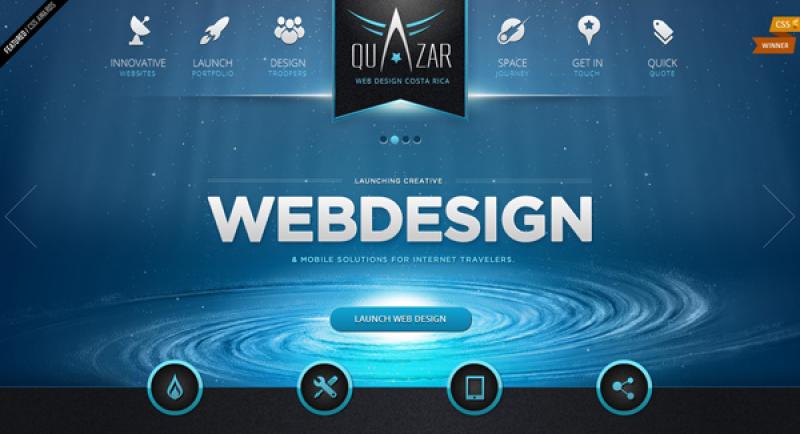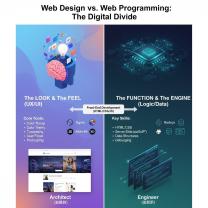What is the Best Website Design?
Defining the "best" website design can be subjective and dependent on various factors, including the purpose of the website, the target audience, and the specific goals of the site owner. However, there are several optimal design practices that can contribute to a successful and effective website. Here are key considerations for achieving the best website design:
Clear Purpose and Goals:
- Clearly define the purpose and goals of the website. Whether it's to inform, sell products, generate leads, or provide a service, the design should align with the site's objectives.
User-Centric Design:
- Prioritize user experience (UX) by creating a design that is intuitive, easy to navigate, and meets the needs of the target audience. Consider user personas and conduct usability testing.
Responsive Design:
- Ensure the website is responsive and adapts to different devices and screen sizes, providing a seamless experience on desktops, tablets, and smartphones.
Fast Loading Speed:
- Optimize images, minimize code, and utilize content delivery networks (CDNs) to ensure fast loading times. Users expect websites to load quickly, and search engines consider speed in ranking algorithms.
Intuitive Navigation:
- Design an intuitive and organized navigation structure. Users should easily find the information they are looking for without unnecessary clicks.
Consistent Branding:
- Maintain consistent branding elements, including logos, colors, and typography, to create a cohesive and professional look that aligns with the brand identity.
Accessible Design:
- Design with accessibility in mind, ensuring that the website is usable by people with disabilities. This includes considerations for text alternatives, keyboard navigation, and color contrast.
High-Quality Content:
- Provide relevant, engaging, and high-quality content that meets the needs of the audience. Content should be well-organized, easy to read, and support the site's goals.
Effective Calls to Action (CTAs):
- Clearly define and strategically place calls to action (CTAs) to guide users toward desired actions, whether it's making a purchase, filling out a form, or subscribing to a newsletter.
Search Engine Optimization (SEO):
- Implement SEO best practices, including keyword optimization, meta tags, and clean URL structures, to enhance the website's visibility in search engine results.
Security Measures:
- Prioritize website security by using HTTPS, keeping software and plugins up to date, and implementing security measures to protect against cyber threats.
Scannable Layout:
- Use a scannable layout with clear headings, subheadings, and concise paragraphs. Users should be able to quickly grasp the main points of the content.
Social Media Integration:
- Integrate social media elements as appropriate, allowing users to share content easily and connect with the brand on various platforms.
Analytics and Tracking:
- Implement analytics tools to track website performance, user behavior, and conversion metrics. Use data to make informed decisions and optimize the website over time.
Cross-Browser Compatibility:
- Ensure compatibility with various web browsers to provide a consistent experience for all users.
Ultimately, the best website design is one that effectively achieves its intended goals, delights its users, and aligns with the brand's identity and values. Regularly reviewing and updating the website based on user feedback, analytics, and industry trends is essential for maintaining optimal design practices over time.
What constitutes the criteria for the best website design practices?
Defining the "best" website design practices can be subjective and context-dependent, as different websites have different goals and target audiences. However, there are several key principles that consistently contribute to effective and user-friendly website design:
1. User-centricity:
- Focus on user needs and goals: Understand your target audience and their primary objectives when visiting your site. Design the website to be intuitive, efficient, and guide them towards achieving their goals.
- Clear navigation and information hierarchy: Organize content logically and prioritize information based on user needs. Make navigation simple and consistent across all pages.
- Accessibility: Ensure the website is accessible to users with disabilities, including those using screen readers or assistive technologies.
2. Visual design:
- Clean and clutter-free layout: Avoid overwhelming users with excessive visual elements. Use white space effectively to improve readability and focus.
- Consistent branding: Maintain a consistent visual identity throughout the website, including colors, fonts, logos, and imagery. This reinforces brand recognition and trust.
- High-quality visuals: Use professional and relevant images, icons, and videos that enhance user experience and support your content.
3. Technical performance:
- Fast loading times: Optimize website speed for a smooth and responsive user experience. Minimize page size, leverage caching, and optimize images.
- Mobile-friendliness: Ensure the website is responsive and adapts seamlessly to different screen sizes and devices, including mobile phones and tablets.
- Cross-browser compatibility: Test and ensure the website functions correctly across different web browsers and operating systems.
4. Content and interaction:
- Engaging and informative content: Provide valuable, relevant, and concise content that addresses your audience's needs and interests. Use clear and concise language, avoid jargon, and prioritize scannability.
- Call to action (CTA): Clearly guide users towards desired actions, whether it's signing up for a newsletter, making a purchase, or contacting you.
- Interactive elements: Use interactive elements like buttons, forms, and animations strategically to engage users and enhance their experience.
5. Analytics and optimization:
- Track user behavior: Use analytics tools to understand how users interact with your website and identify areas for improvement.
- A/B testing: Test different design elements and content variations to see what resonates best with your audience and optimize your website continuously.
- Maintain and update: Regularly update your website content, address technical issues, and adapt to evolving user needs and trends.
Remember, the "best" website design practices are not static and should evolve based on your audience, goals, and industry. By prioritizing user needs, focusing on visual appeal, technical performance, engaging content, and continuous optimization, you can create a website that effectively achieves its purpose and resonates with your target audience.












